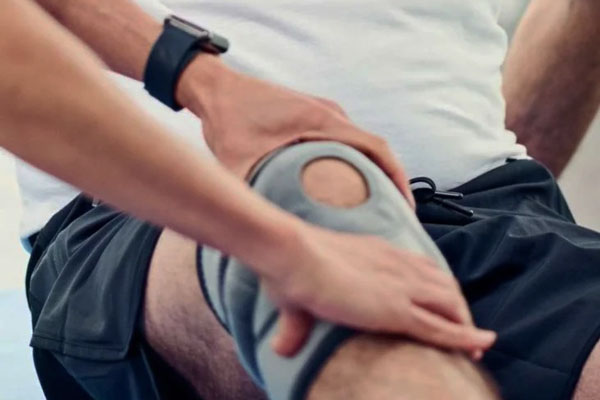Lateral Collateral Ligament (LCL) Injury
The lateral collateral ligament (LCL) is one of the four major ligaments (fibrous connective tissue that connects bones with muscles) in the knee. The LCL is found on the outside of the knee and connects the thighbone (femur) to the lower leg bone (fibula). Its main function is to regulate the sideways motion of the knee and to protect it from unusual movements and stress across the knee (bending outward).
What is a lateral collateral ligament injury?
A lateral collateral ligament (LCL) injury is a sprain or tear in the LCL. One may hurt the LCL during activities that involve bending, twisting, quick changes of direction, or when the inside of the knee is hit. Injured ligaments are considered sprains, and based on their severity, they are graded as:
- Grade 1: The damage is mild where it has been slightly stretched, but the knee joint is stable.
- Grade 2: The injury stretches the ligament to the point where it becomes lose and is referred as a partial tear of the ligament.
- Grade 3: This grade is commonly referred as a complete tear of the ligament, where it has been split into two pieces, and the knee joint becomes unstable.

What are the symptoms of lateral collateral ligament injury?
The common symptoms of LCL injury are:
- Swelling and tenderness around the knees.
- Gradually increasing pain on the knee.
- Bruising in the area of your injury.
- Instability of the knee joint.
What causes a lateral collateral ligament injury?
A direct trauma to the inside of the knee is the main cause of lateral collateral ligament injury. This injury will increase the pressure on the knee, causing the ligament to stretch or tear. This type of injury is common among sportspersons who play soccer, basketball, football, or hockey, which involve a lot of quick stops, turns, or violent collisions. Repetitive stress on the knee joint will reduce the elasticity of the joint, leading to a ligament tear.
The LCL injury can also occur from various accidents, like slipping on a wet surface or missing a step while using stairs.
How is lateral collateral ligament injury diagnosed?
To diagnose an LCL injury, your doctor will ask about your symptoms and medical history. During a physical exam, the doctor will perform specific assessments to test for LCL tears, followed by some imaging tests like X-rays or an MRI scan to confirm the diagnosis and evaluate the severity of the tear.
What are the treatment options for lateral collateral ligament injury?
An injured lateral collateral ligament of the knee can be treated with at-home, nonsurgical options, or surgical methods, depending on the severity of the ligament tear. Recovery time after the treatment also depends on the grade of the injury.
Grade 1 and 2 LCL tears are usually treated by non-surgical and home-care methods that allow the ligament to rest and repair on its own. The treatment methods include:
- Proper rest to avoid the pressure on the knee.
- Applying ice or a cold pack over the injured area.
- Wrapping your knee with an elastic bandage to immobilize and prevent swelling.
- Elevating your knee to reduce swelling around the affected area.
- Anti-inflammatory medicine to reduce pain.
Your doctor may suggest that you use crutches to limit the weight put on your legs and wear braces to protect and support your knee movements. The treatment is followed by a rehabilitation period where the patients are trained with exercises to ease knee movements and develop muscle strength.
When the lateral collateral ligament is completely torn (grade 3), a surgical procedure is recommended. It aims to repair or reconstruct the lateral collateral ligament, which is severely injured.
Repair surgery is performed to reattach the torn ligament to the bone using large sutures (strong medical thread), screws, or staples. The torn ends are sewn together using strong and durable surgical thread.
Reconstruction surgery is performed when the repair surgery fails to treat the ligament tear. Here, a tendon graft is used to replace the injured LCL tissue. The tendon graft will usually be taken from the healthy parts of the patient's knee or from a human tissue donor.
How can one prevent lateral collateral ligament injury?
It is difficult to prevent knee ligament injuries, as they are often caused as a result of accidents or unforeseen incidents. Some preventive measures can be followed that may help minimize the risk of a knee ligament injury, which include:
- Following proper technique and alignment while doing normal activities like walking.
- Practicing exercises that strengthen the muscles and stabilize the knee joint.
- Staying alert while playing sports that are susceptible to knee injuries like soccer and football.